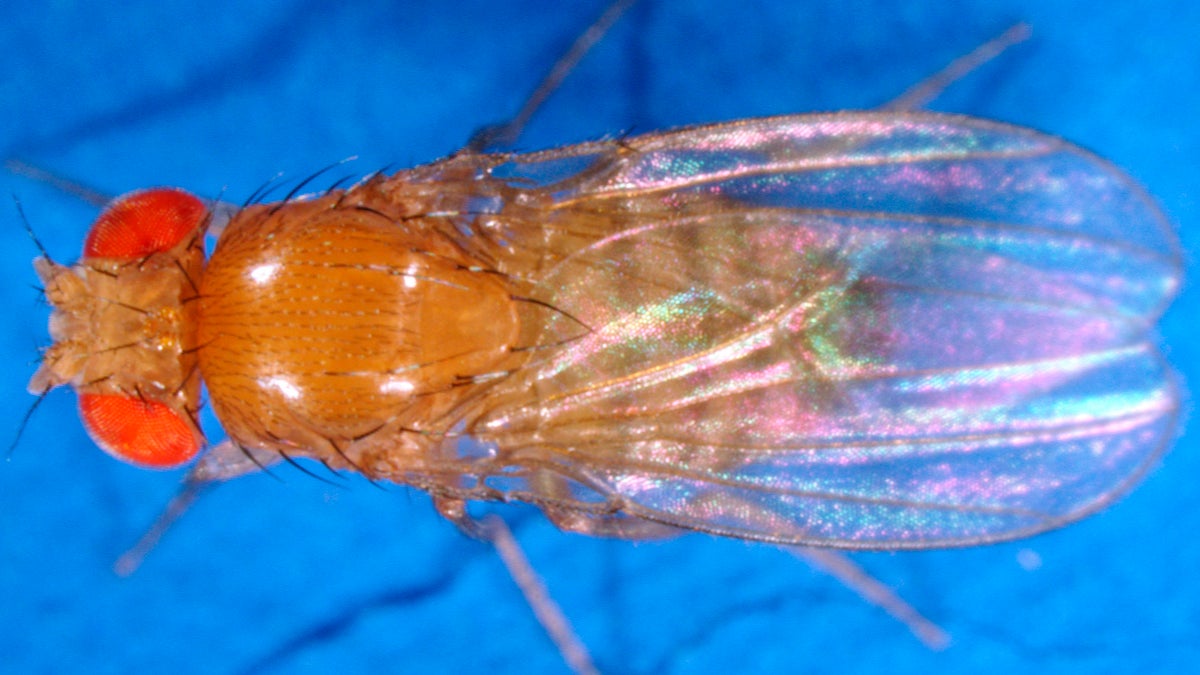Keeping an eye on fruit flies, Penn scientists shed light on sleep

A fruit fly is pictured in this this undated photo released by Indiana University. (AP Photo/Indiana University, Kevin Cook)
New work published by neuroscientists at the University of Pennsylvania suggests we are getting closer to understanding how the drive to sleep comes about.
A lot of the work scientists have done to study sleep has focused on the daily, or circadian, rhythms that synchronize our bodies with the sun to keep us on schedule. Equally important, but far less well known, is how brains initiate sleep. New work published by neuroscientists at the University of Pennsylvania in the journal eLife is shedding light on the need for sleep.
Fruit flies, surprisingly enough, sleep a lot like humans. There’s an afternoon nap, then a nice, long eight-hour stretch at night — but not for a recently discovered mutant in Amita Sehgal’s lab.
Flies with a mutant form of the “redeye” gene get about half as much sleep as normal flies, said Sehgal, a professor of neuroscience and Howard Hughes Medical Institute researcher.
“Typically what happens is that they fall asleep but then keep waking up,” said Sehgal. “But because they still have the need to sleep, they keep going back to sleep, so the number of episodes actually increases.”
That tortured experience may sound familiar to insomniacs. When Sehgal mapped which gene was affected, she was surprised. The gene makes part of a receptor in the brain that responds to nicotine — a protein that typically works to keep animals awake.
“So we’re excited, for one thing, because this looks like a unique acetylcholine receptor that actually promotes sleep,” she said.
Flies with more redeye aren’t able to sleep more, meaning redeye isn’t directly controlling the need for sleep. But this is the closest Sehgal has been to identifying those molecules. She found that as flies get sleepier, the amount of redeye protein naturally increases.
Since redeye is conserved in humans, Sehgal said it’s likely that similar mechanisms are at play in people, but that will have to be tested.
WHYY is your source for fact-based, in-depth journalism and information. As a nonprofit organization, we rely on financial support from readers like you. Please give today.

